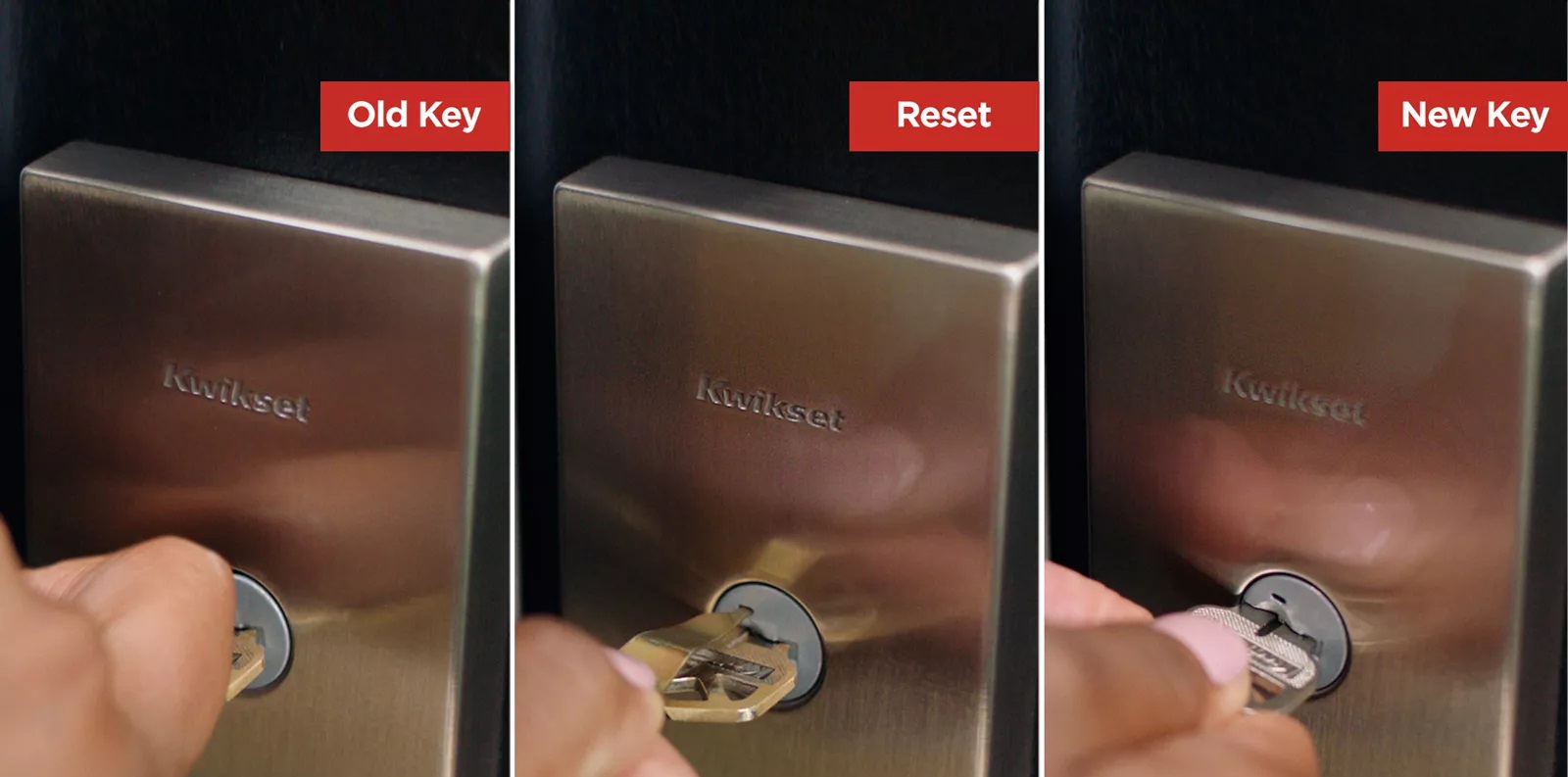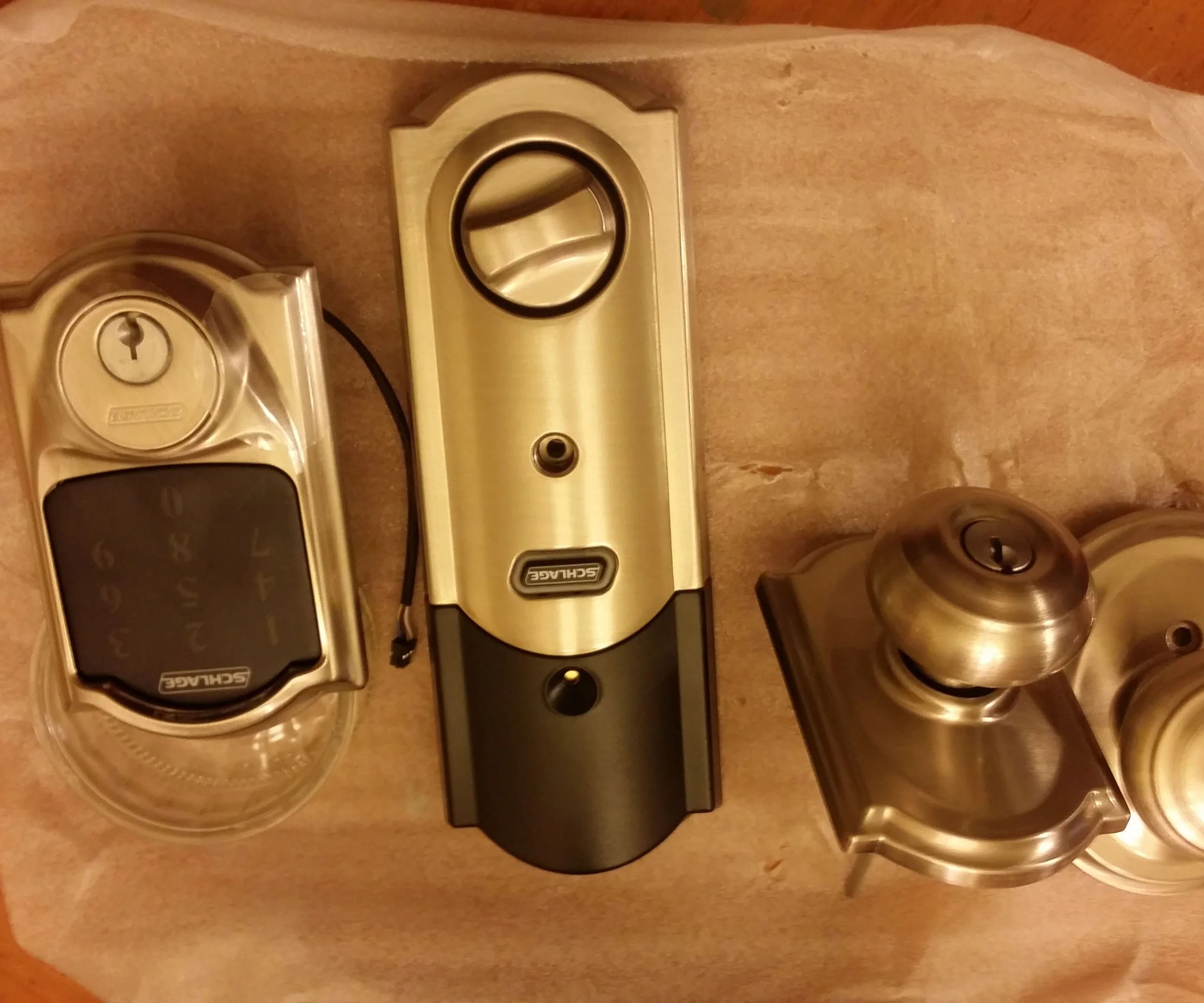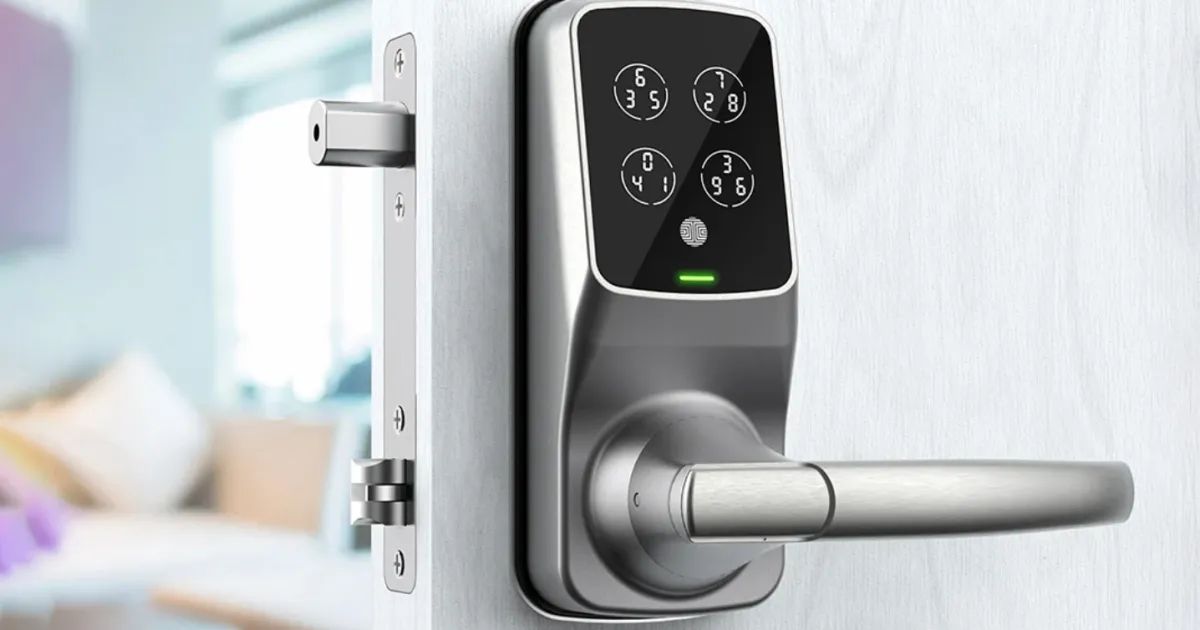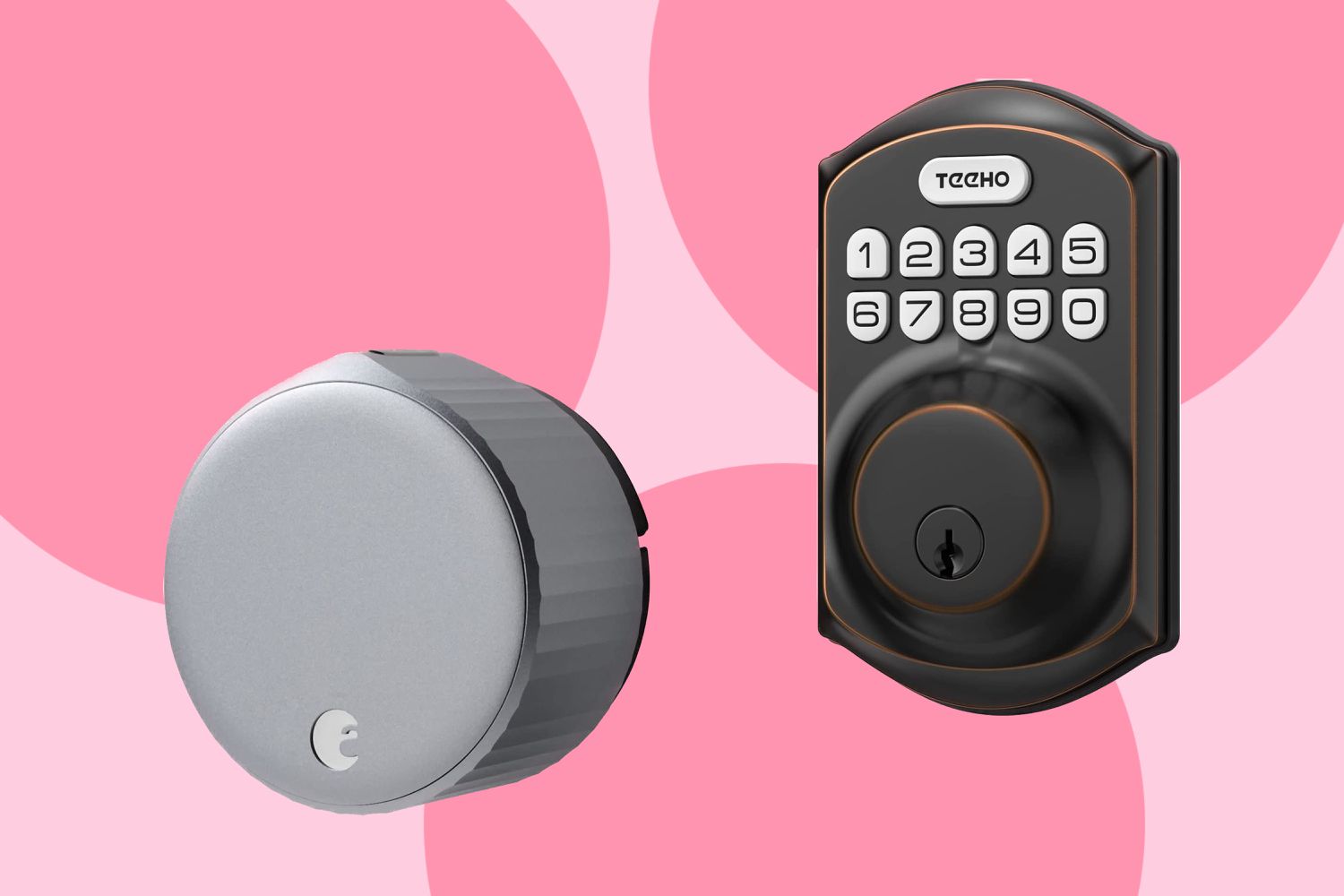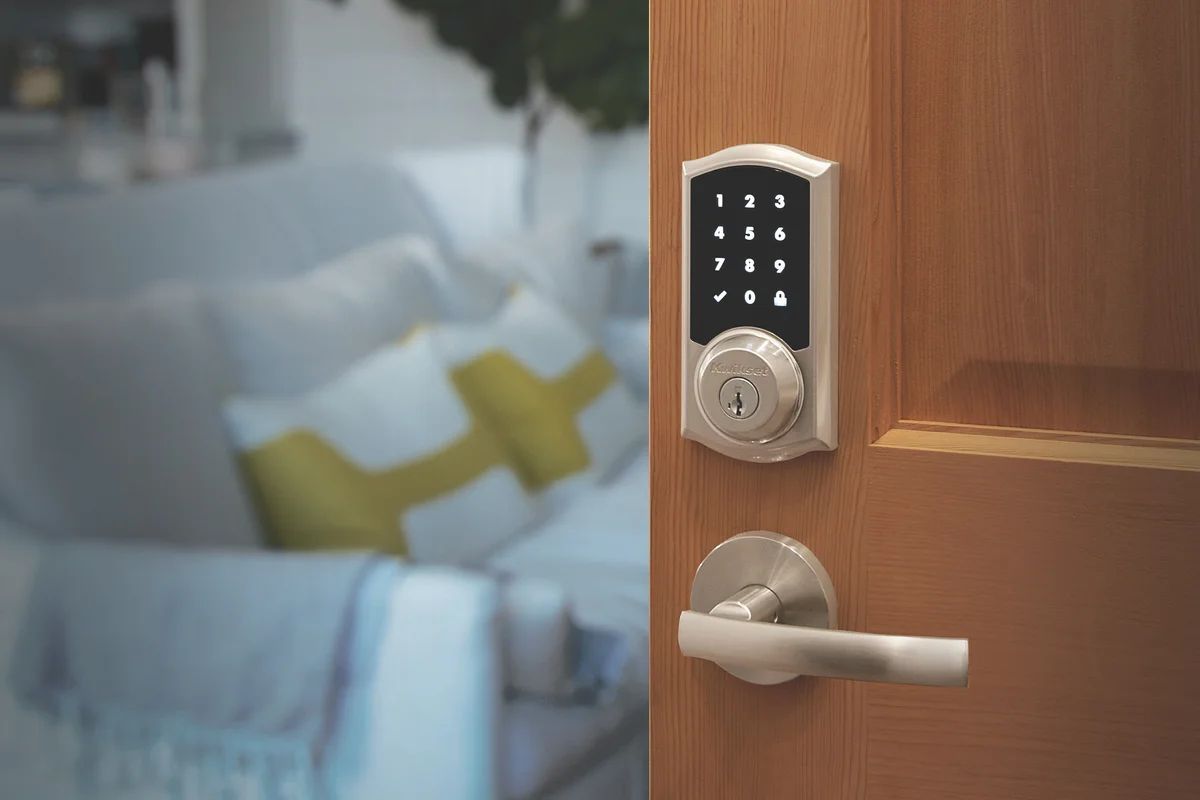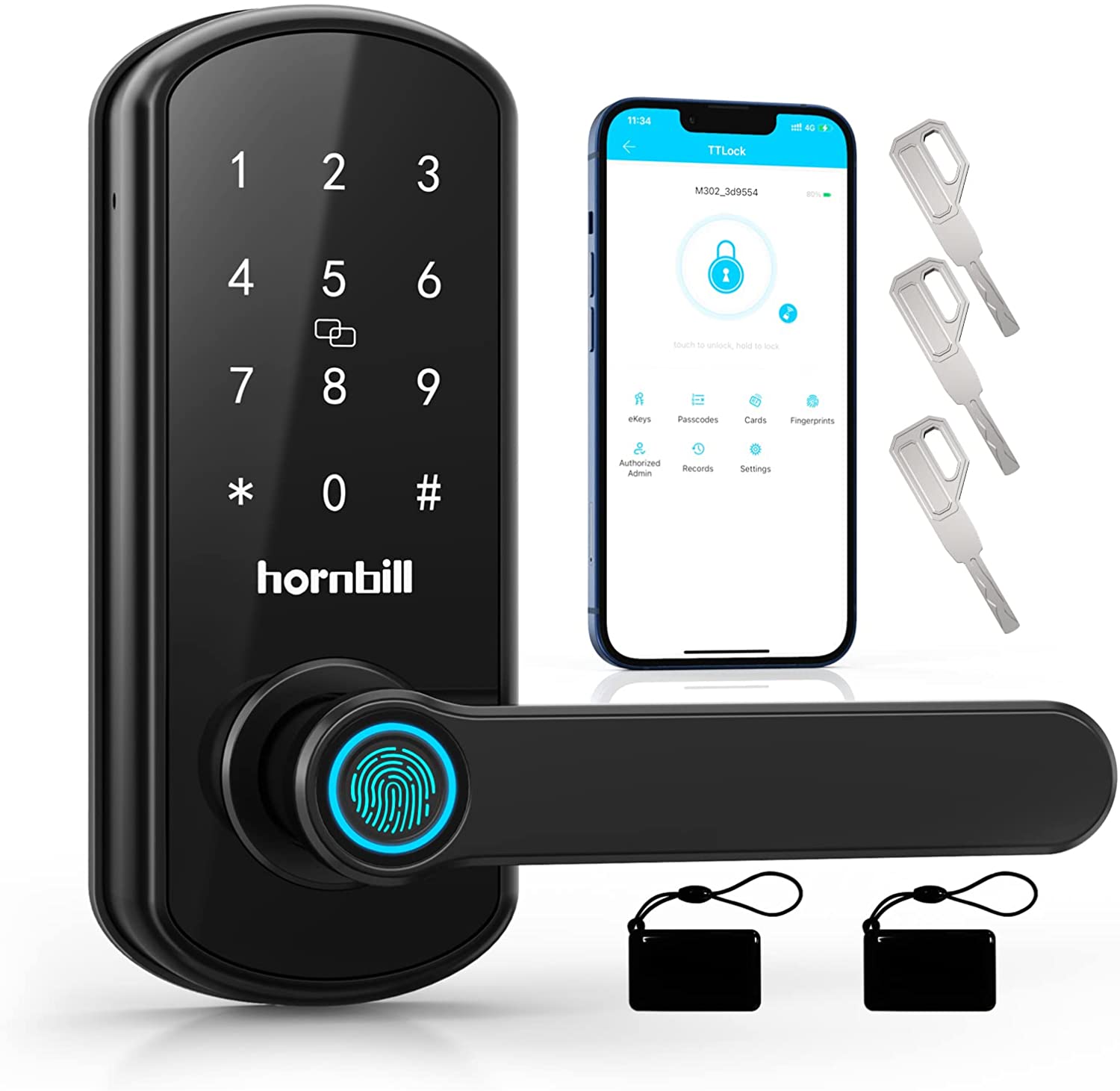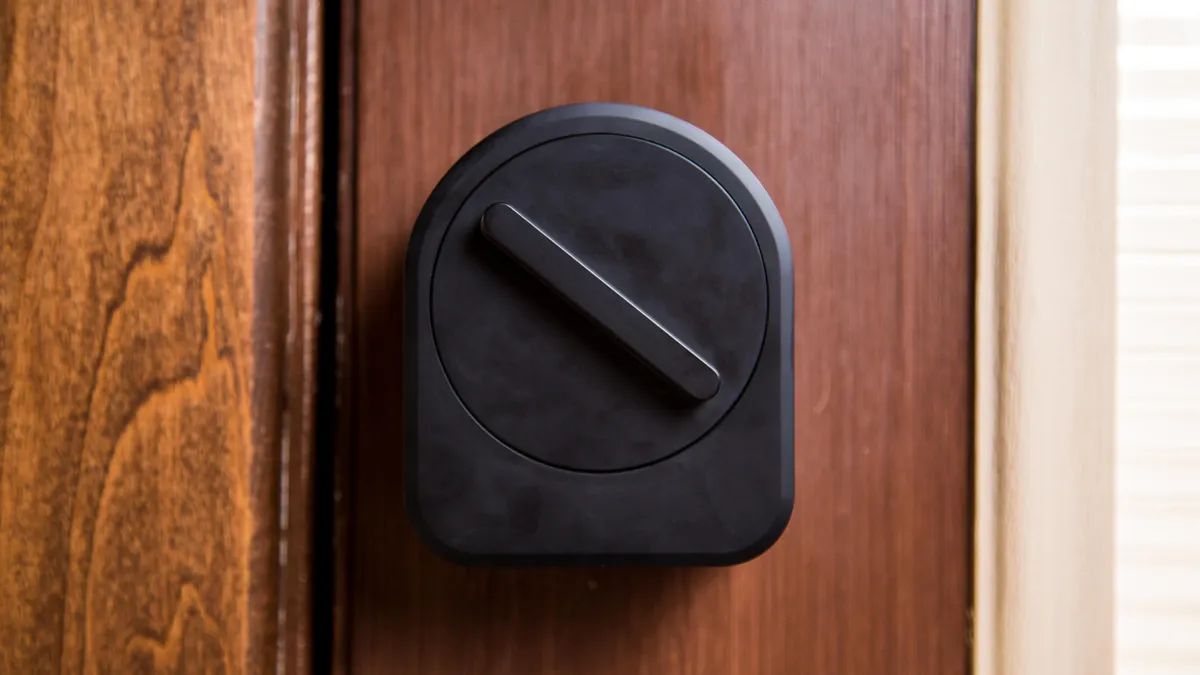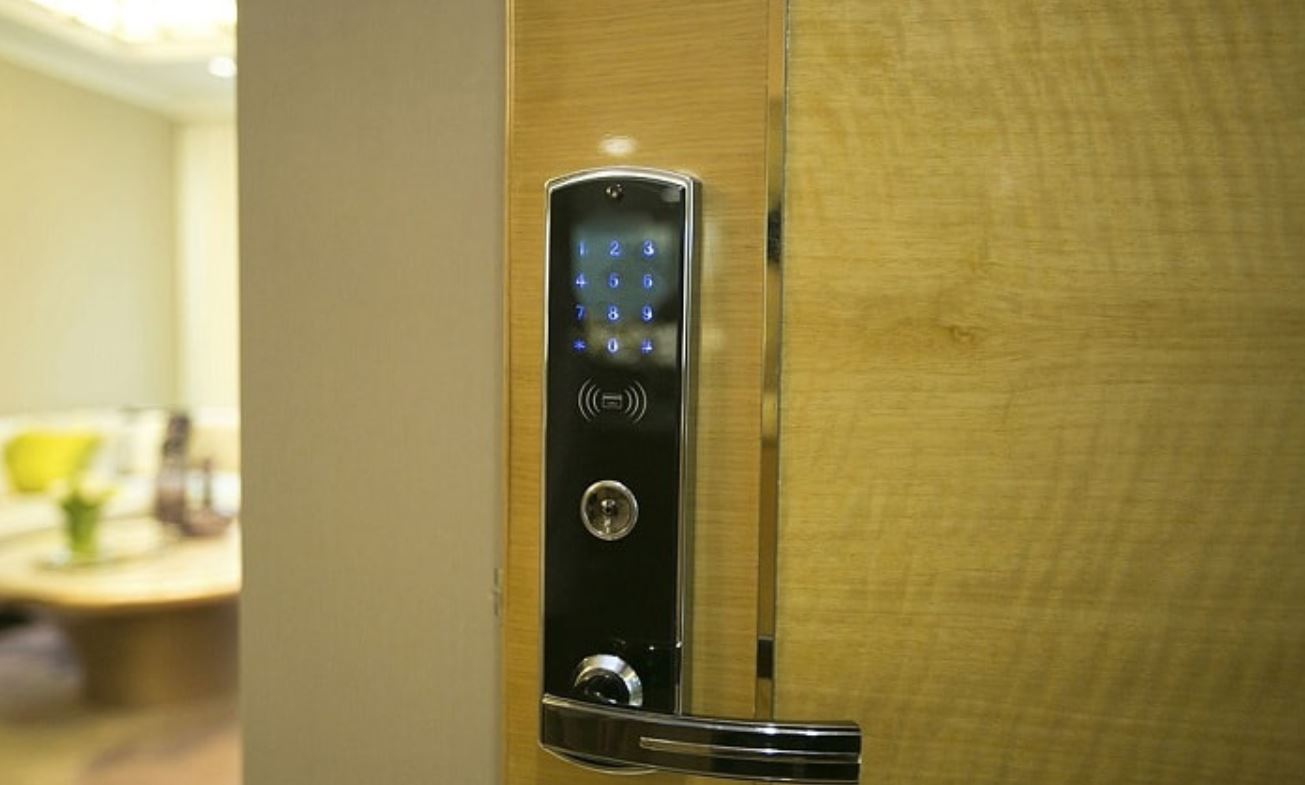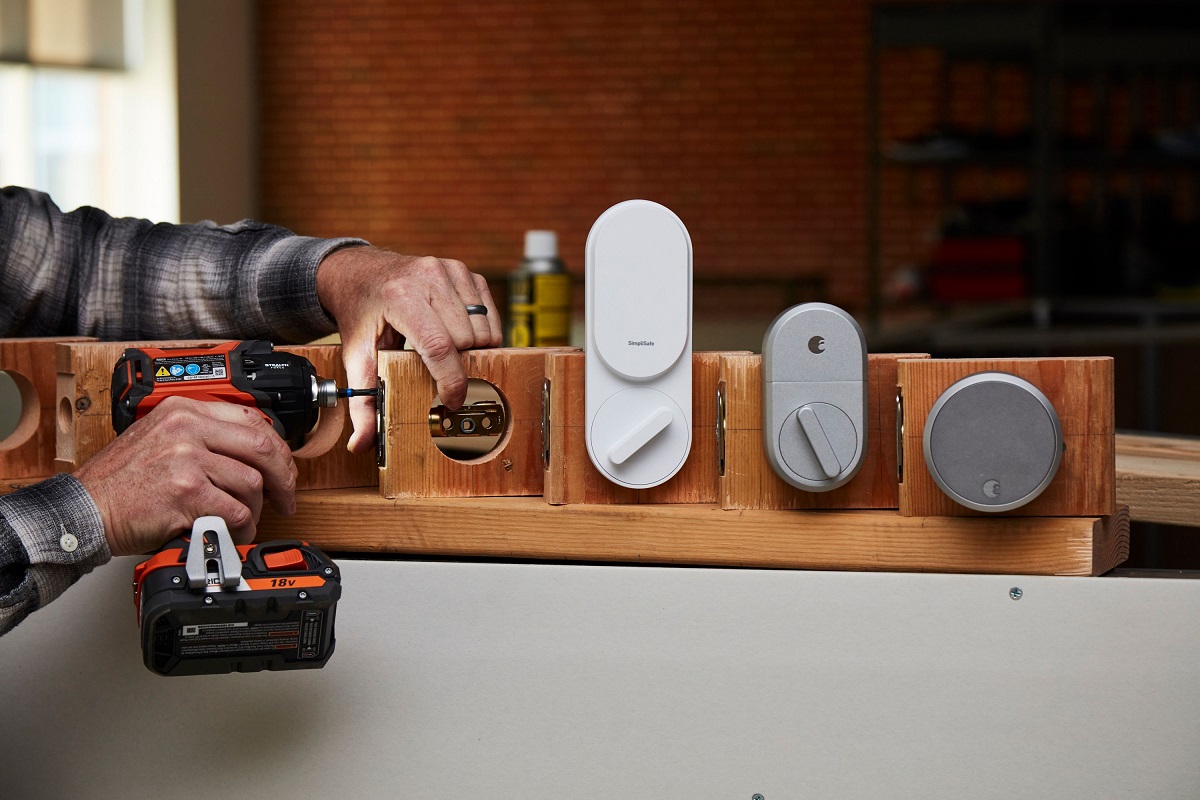Introduction
Welcome to our guide on how to rekey a smart lock. As technology advances, more and more homeowners are opting for smart locks to enhance the security and convenience of their homes. Smart locks offer features such as keyless entry, remote access, and the ability to monitor and control access from anywhere with a smartphone.
While smart locks provide numerous benefits, one aspect to consider is the need to rekey them. Rekeying a smart lock is the process of changing the existing keys or passwords associated with the lock, effectively denying access to anyone who previously had access. This could be due to misplaced keys, a change in tenants, or concerns over home security.
In this guide, we will walk you through the step-by-step process of rekeying a smart lock. Whether you have a keypad lock, a fingerprint lock, or a combination of both, the general principles for rekeying remain the same. By following these instructions, you can ensure that your home remains secure and that only authorized individuals have access to your property.
Before we dive into the rekeying process, it’s essential to familiarize yourself with some basic terminology and understand how smart locks function. This understanding will help you grasp the significance of rekeying and the importance of maintaining the security of your smart lock system.
Understanding Smart Locks
Smart locks are advanced electronic devices that replace traditional mechanical locks on doors. These locks use a combination of technology, such as Bluetooth, Wi-Fi, or RFID, to provide convenient and secure access to your home or business.
One of the key features of smart locks is the ability to control access remotely. This means you can lock or unlock your door from anywhere using a smartphone, tablet, or computer. Some smart locks also offer additional features, such as sending notifications when someone enters or leaves your property, creating temporary access codes for guests, and even integrating with other smart home devices.
Smart locks typically come in two main types: those with keypads and those with biometric features. Keypad locks require you to enter a PIN code on a keypad to unlock the door, while biometric locks use features like fingerprints or facial recognition to grant access.
In addition to their convenience, smart locks also offer enhanced security compared to traditional locks. They often have built-in encryption to protect against hacking and use unique authentication methods to ensure only authorized individuals can access your property. Some smart locks also have tamper detection features that can alert you if someone attempts to tamper with the lock or force entry.
When it comes to rekeying a smart lock, it’s important to understand that the process may vary slightly depending on the specific model and brand. However, the general principles remain the same. Rekeying allows you to invalidate any existing keys or codes and replace them with new ones, ensuring that only authorized individuals have access to your property.
Now that we have a better understanding of what smart locks are and how they work, let’s explore the reasons why you might need to rekey your smart lock in the next section.
Reasons to Rekey a Smart Lock
There are several reasons why you might need to rekey your smart lock. Let’s explore some common scenarios where rekeying becomes necessary:
- Misplaced keys: If you’ve lost track of your keys or suspect they may have fallen into the wrong hands, it’s crucial to rekey your smart lock. Rekeying will ensure that the lost keys are no longer valid, preventing unauthorized entry into your home.
- Change in tenants: If you’re a landlord or property manager and a tenant moves out, rekeying the smart lock is essential to protect the security of the property. Even if the previous tenant returned their keys, it’s best to rekey the lock to prevent any potential unauthorized entry by the previous tenant or anyone who may have obtained a copy of the keys.
- Enhancing security: Rekeying is an effective way to upgrade the security of your home. If you’ve recently experienced a security breach or have concerns about the security of your property, rekeying your smart lock will provide peace of mind. By changing the codes or access credentials, you can ensure that only authorized individuals have access to your home.
- Lost or stolen devices: In the event that your smartphone or other device used for remote access to your smart lock is lost or stolen, it’s crucial to rekey the lock. By doing so, you can prevent unauthorized access and ensure that only the new device can control the smart lock.
- End of a service contract: If you had a service provider or a professional locksmith who had access to your smart lock for maintenance or repairs, it’s a good practice to rekey the lock once the contract or service ends. This will ensure that the provider no longer has access to your property.
Rekeying your smart lock in these situations is a proactive measure to maintain the security and control over access to your property. It allows you to invalidate any existing keys or access codes and replace them with new ones that only authorized individuals possess.
Now that we understand the reasons for rekeying a smart lock, let’s move on to the necessary preparations before you embark on the rekeying process.
Preparations before Rekeying a Smart Lock
Before you begin the process of rekeying your smart lock, it’s important to gather the necessary tools and information. Proper preparations will help ensure a smooth and successful rekeying process. Here are the key preparations you should make:
- Read the manufacturer’s instructions: Start by reviewing the instruction manual or any documentation provided by the manufacturer of your smart lock. This will give you a clear understanding of the specific rekeying process for your lock model and any unique requirements or considerations.
- Gather the necessary tools: Check that you have all the tools required for rekeying your smart lock. The specific tools needed may vary depending on the lock model, but common tools include a screwdriver, a pinning kit, a key decoder, and a follower tool. Make sure these tools are easily accessible before you begin.
- Prepare your new keys or access codes: If you’re planning to use new keys or access codes, ensure that you have them ready before starting the rekeying process. This may involve contacting a locksmith to create new keys or generating new access codes if your smart lock supports multiple user credentials.
- Take safety precautions: Before you begin, ensure that you have taken proper safety precautions. This may involve wearing protective gloves or safety glasses, especially if you’re working with small pins or components. Additionally, make sure you’re working in a well-lit area with adequate ventilation.
- Prepare a work area: Clear a flat, stable surface to serve as your work area. This will allow you to organize your tools and components efficiently, reducing the risk of losing any important parts during the rekeying process.
- Ensure a distraction-free environment: Rekeying a smart lock requires focus and attention to detail. Find a quiet and distraction-free environment where you can concentrate on the task at hand. Minimizing interruptions will help prevent errors during the rekeying process.
By taking these preparations seriously, you can minimize potential obstacles and ensure a successful rekeying process. Following the manufacturer’s instructions, gathering the necessary tools, preparing your new keys or access codes, and setting up a suitable work environment will all contribute to a smooth rekeying experience.
With the preparations complete, we are now ready to dive into the step-by-step process of rekeying your smart lock. Follow along in the next section to learn the exact steps to take.
Steps to Rekey a Smart Lock
Rekeying a smart lock may seem like a complex task, but by following these step-by-step instructions, you can easily accomplish the process. Please note that the specific steps may vary depending on your smart lock model and brand. Always refer to the manufacturer’s instructions for detailed guidance. Here are the general steps to rekey a smart lock:
- Remove the lock from the door: Start by removing the smart lock from the door, following the manufacturer’s instructions. This typically involves unscrewing the lock and disconnecting any electrical connections.
- Disassemble the lock: Once the lock is removed, carefully disassemble it using the appropriate tools. This will expose the cylinder, pins, and springs that need to be rekeyed. Take caution to not lose any small components during this process.
- Remove the current pins: Use a pinning kit or a pin removal tool to extract the existing pins from the cylinder. Be mindful of the order in which the pins are removed, as it will determine the new key combination.
- Decode the key: Use a key decoder tool to determine the original key’s bitting or the specific positions of the pins. This information will help you create the new key combination.
- Insert new pins: Using the decoded key information, insert the new pins into the cylinder in the correct order. The new pins should correspond to the desired key combination or access code.
- Reassemble the lock: Once the new pins are in place, carefully reassemble the lock, ensuring that all components are properly aligned and connected. Pay attention to any specific reassembly instructions provided by the manufacturer.
- Test the new key: Before reinstalling the lock back onto the door, test the new key or access code to ensure that it operates the lock smoothly and without any issues. This will help you confirm that the rekeying process was successful.
- Reinstall the lock: Once you’re satisfied with the rekeying results, reinstall the smart lock onto the door following the manufacturer’s instructions. Make sure all screws are tightly secured and any electrical connections are properly reconnected.
It’s important to note that rekeying a smart lock requires precision and careful handling of components. If you’re unsure or uncomfortable with any step of the process, consider consulting a professional locksmith for assistance.
Now that you have successfully rekeyed your smart lock, it’s essential to be aware of potential issues that may arise during or after the rekeying process. Refer to the next section for common troubleshooting tips.
Troubleshooting Common Issues
While rekeying a smart lock is a relatively straightforward process, you may encounter some common issues along the way. Understanding these issues and how to troubleshoot them will help ensure a successful rekeying experience. Here are some common problems you might encounter and their possible solutions:
- Pins not aligning correctly: If you find that the pins are not aligning properly during the reassembly process, double-check the order and position of the pins. Make sure they match the new key combination. Additionally, ensure that the springs are correctly placed to apply the right amount of tension.
- Difficulty turning the key: If you experience difficulty turning the key after rekeying the smart lock, check the alignment of the pins once again. Sometimes, slight adjustments may be needed to ensure smooth operation. Lubricating the lock with graphite or a lock lubricant can also help improve the key’s turning motion.
- Lock not functioning after rekeying: If the lock does not function properly even after rekeying, confirm that all pins and components are correctly installed. Check for any obstructions or debris that may be interfering with the lock’s operation. If the problem persists, it’s advisable to consult a professional locksmith for further assistance.
- Incorrect key bitting: If the new key fails to operate the lock as expected, it’s possible that the key bitting was decoded incorrectly. Recheck the decoded information and try rekeying the lock using the correct key bitting. It’s also important to ensure that the new key is cut accurately to match the new pin positions.
- Electrical issues: If your smart lock relies on electrical connections for power or remote access, ensure that all electrical connections are properly reestablished after rekeying. Check the batteries or power source to ensure they are functioning correctly. If you notice any issues with the lock’s electrical components, refer to the manufacturer’s troubleshooting guide or contact their support for assistance.
If you encounter any other issues during or after the rekeying process that are not covered here, it’s recommended to consult the manufacturer’s troubleshooting guide or seek professional help from a qualified locksmith. They will be able to provide specific solutions for your smart lock model and help resolve any issues.
With these troubleshooting tips in mind, you are well-equipped to handle common issues that may arise during the rekeying process. Following these steps and troubleshooting guidance will ensure a successful rekeying experience with your smart lock.
Conclusion
Rekeying a smart lock is an important step in maintaining the security and control of your home or business. By following the step-by-step instructions provided in this guide, you can rekey your smart lock with confidence and ensure that only authorized individuals have access to your property.
We began by understanding what smart locks are and how they function, highlighting their convenience and enhanced security features. We then explored various reasons why rekeying a smart lock becomes necessary, such as lost keys, changing tenants, and concerns over home security.
Before embarking on the rekeying process, we emphasized the importance of making adequate preparations. These preparations included familiarizing yourself with the manufacturer’s instructions, gathering the necessary tools, and obtaining new keys or access codes if needed.
We then provided a comprehensive set of steps to guide you through the rekeying process. By carefully disassembling the lock, removing and replacing the pins, decoding the key, and reassembling the lock, you can successfully rekey your smart lock. We also outlined common troubleshooting tips to address any issues that may arise during or after the rekeying process.
Rekeying a smart lock may require attention to detail and patience, but the result is an enhanced sense of security and control over access to your property. With the proper knowledge and precautions, rekeying your smart lock can be a seamless and rewarding experience.
Remember, if you encounter any difficulties or are unsure about any aspect of the rekeying process, it’s always advisable to seek the assistance of a professional locksmith. They have the expertise and specialized tools to ensure a smooth and accurate rekeying process.
We hope that this guide has provided you with the necessary information and guidance to successfully rekey your smart lock. By taking the necessary precautions, following the steps outlined, and troubleshooting any issues that arise, you can maintain the security and convenience that smart locks offer.







